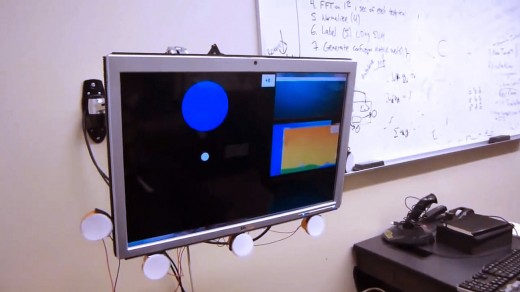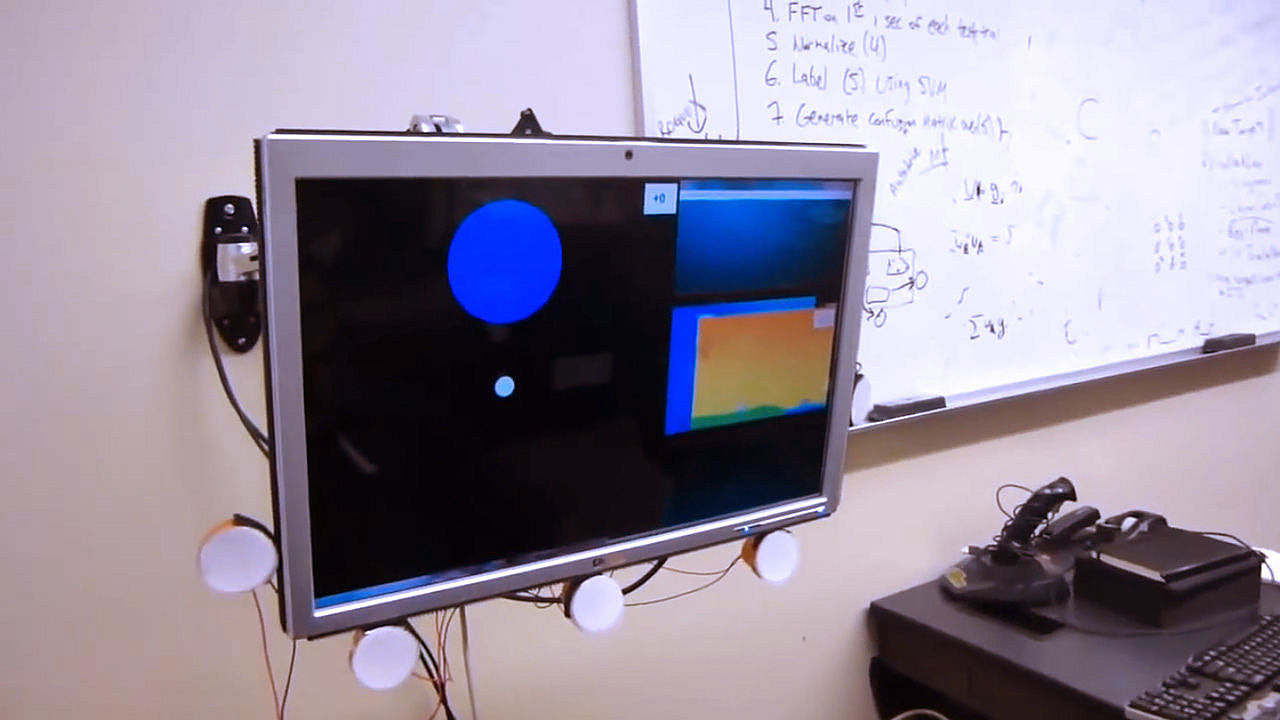This Video Game Proves That Telepathy Is Possible
Editor: Noah Robischon
The test subjects wore sensor- and magnet-filled hats that vaguely resembled Cerebro in the X-Men comics and movies. The programming and the brain-computer interface used in the study involved players in different buildings playing a simple Missile Commander-like game in which they attempted to protect a city from alien invasion. When players in one building, who were hooked up to a electroencephalography machine, thought about pressing a button on their joystick, that thought was turned into computer-readable data and transmitted to a player in another building, who then involuntarily mashed a button on their joystick, defeating those pesky aliens. Thoughts were transmitted using a popular brain-computer interface toolkit called BCI2000. A custom-made serial cable connected the second player’s computer to a transcranial magnetic stimulation (TMS) machine, which induced physical motions in their hands. Researchers in both rooms were in contact with each other via Skype during the tests. In the lab, the second player had their finger successfully controlled by first player between 25% and 83% of the time. Although those percentages are obviously not perfect, they occurred often enough to let researchers know telepathy can be successfully induced via brain-computer interfaces. According to the study, the complete process of a thought from player one turning into an action by player two took approximately 650 milliseconds. Transmission of the thought across the Internet took approximately 10 milliseconds, and the bulk of the remaining time was taken up by the second player’s involuntary muscle movement. As the researchers put it, “Our results provide evidence for a rudimentary form of direct information transmission from one human brain to another using non-invasive means.” Rao and research partner Andrea Stocco hope to eventually create far more complex telepathy tools—tools which could potentially impact a number of fields, including neuroscience, education, and health care:
Most current methods for communicating are still limited by the words and symbols available to the sender and understood by the receiver. Even when they include non-verbal content (as in the case of visual and auditory information), communication constraints can be severe. A great deal of the information that is available to our brain is not introspectively available to our consciousness, and thus cannot be voluntarily put in linguistic form. For instance, knowledge about one’s own fine motor control is completely opaque to the subject, and thus cannot be verbalized. As a consequence, a trained surgeon or a skilled violinist cannot simply “tell” a novice how to exactly position and move the fingers during the execution of critical hand movements. But even knowledge that is introspectively available can be difficult to verbalize. Brilliant teachers may struggle to express abstract scientific concepts in language, and everyone is familiar with the difficulty of putting one’s own feelings into words. Even when knowledge can be expressed in words, one might face the hurdle of translating between the many existing spoken human languages. Can information that is available in the brain be transferred directly in the form of the neural code, bypassing language altogether?
Brain-computer research at the University of Washington is being conducted with the assistance of a grant from the United States Army and additional funding from the W.M. Keck Foundation.
(159)














